Our Orchid Summer Begins
It is the beginning of May, and after an incredibly warm and sunny April, this is the month our orchid year begins in the Derbyshire Peak District. A lovely walk along Tansley Dale and Cressbrook Dale on 2 May revealed our first Early Purple Orchids (Orchis mascula), along with a host of other lovely wild flowers, including thousands of Cowslips, Mountain Pansies, Wood Anemones, and Spring Cinquefoil.



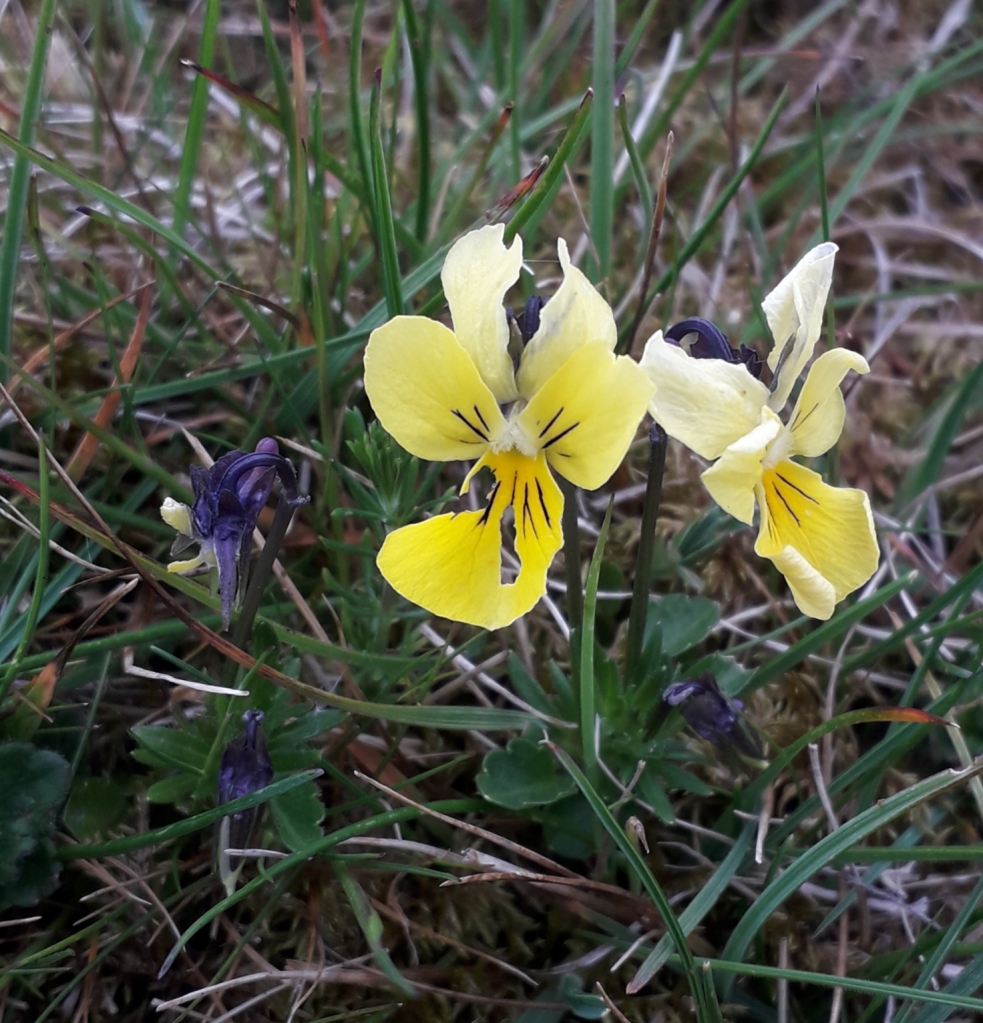


The woodland along the bottom of Cressbrook Dale was quiet and damp – Water Avens everywhere, and the Wild Garlic just starting to bloom. There were a few Bluebells amongst the Violets, and coppiced Hazel and Bird Cherry. The brook had already disappeared beneath the limestone – perhaps for the rest of the summer.

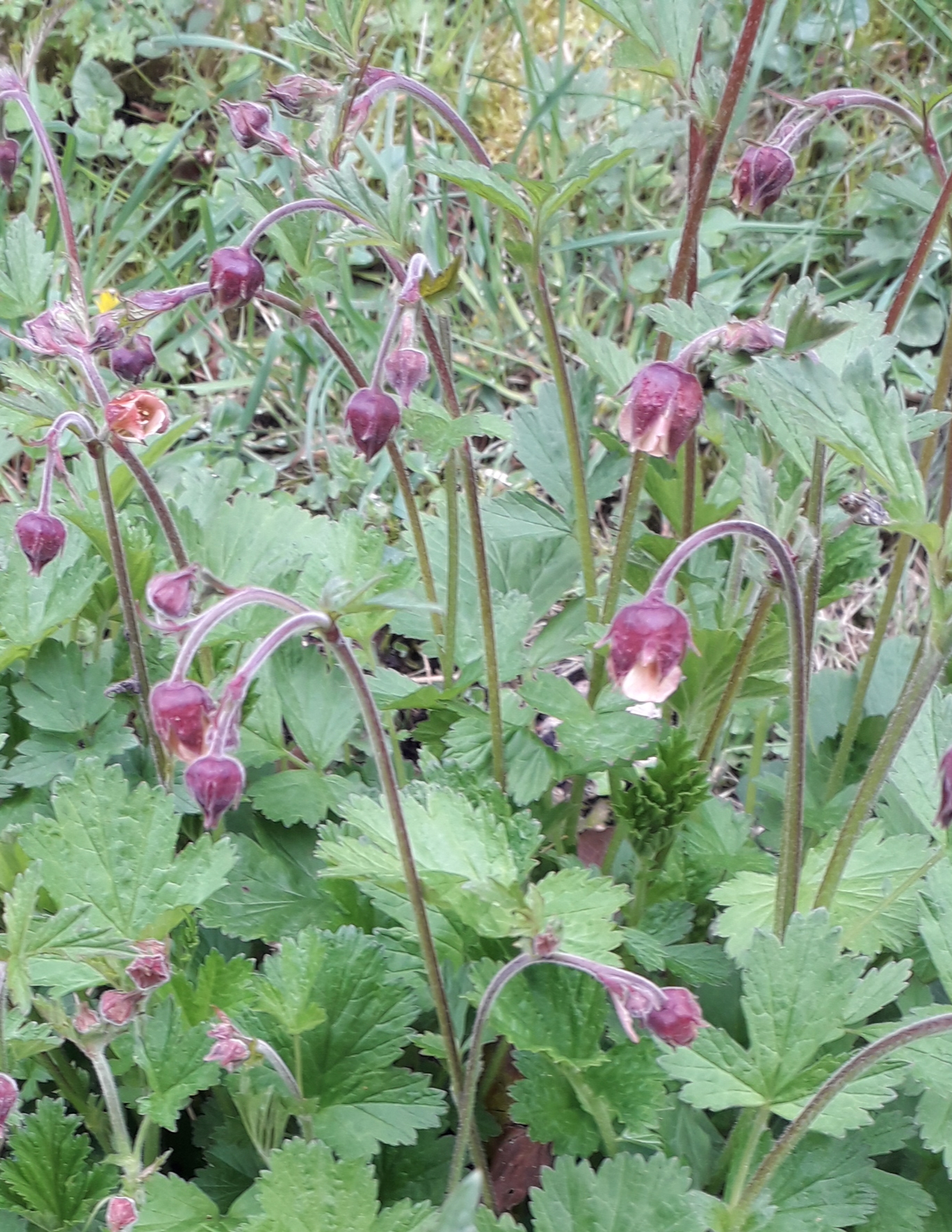


A lovely start to our orchid summer. At the end of 2021, we had seen 31 of the possible 52 British orchids. We’re looking forward to planning visits to see a few more this year (and we know it will get harder).
Perigord region of the Dordogne, France, 21 May-28 May
After two years of not travelling, we finally managed to get away to see our old friends on their lovely smallholding in the Perigord region of France. They had always said ‘Come in May – the orchids are amazing!’ , and they were absolutely right. As well as some real UK rarities, we saw some European specialities, and the sheer abundance of all the orchids seen over just six days was awesome. Sadly I can’t count the Red Helleborines in my UK list – but what a pleasure it was to see so many.
This part of the Dordogne is quiet and unspoilt – extremely rural with a lot of woodland. The soils are very light and dry, and all on limestone. Even in the local fields and gardens, as well as the woodland, you could see chalky stone everywhere. The roadside verges and garden lawns were full of Pyramidal and Lizard Orchids – in their hundreds. And the quiet woodlands contained even more treasures. So even though these don’t count on the UK list – here are just a few of the wonderful sights seen.








In these images – Bird’s Nest Orchid, Pyramidal Orchid, Lizard Orchid, Man Orchid, a glade full of Pyramidal Orchids, a white Pyramidal Orchid, another Lizard Orchid, and Twayblade



Above are Greater Butterfly Orchid, Bee Orchid and more Pyramidal Orchids
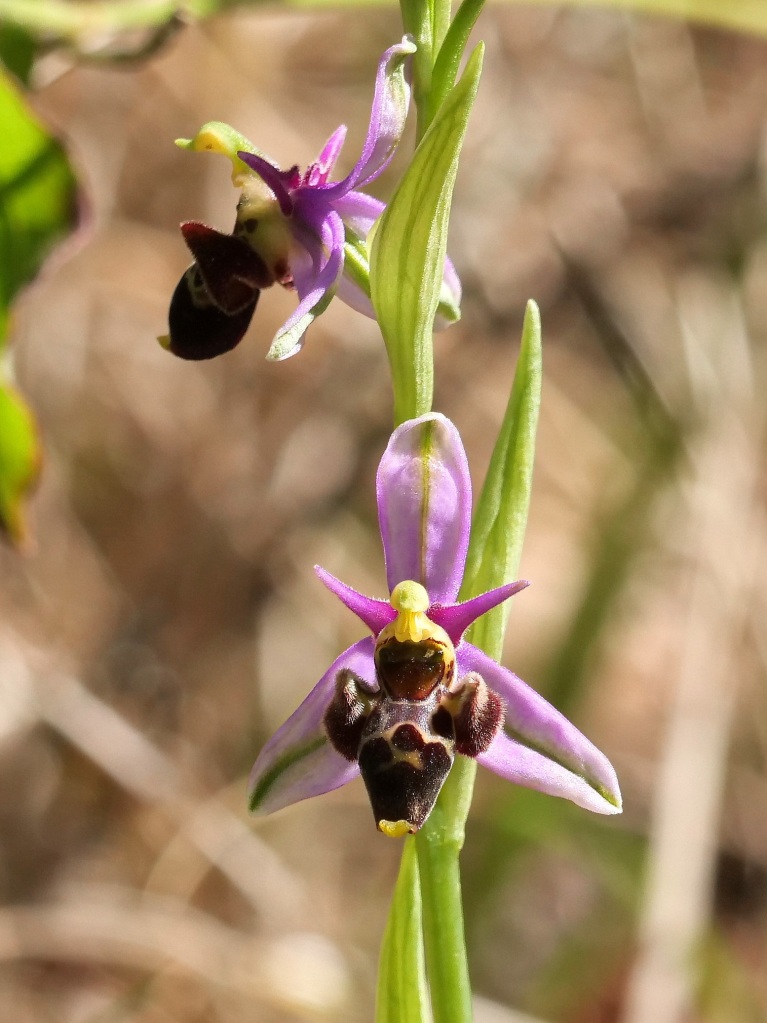


And finally three species which were such a treat – Woodcock Orchid, Violet Limodore (a bit past its best), and Red Helleborine.
The Red Helleborines were quite common in the woodland (but incredibly rare in the UK now), and the Woodcock Orchid and Violet Limodores just would not be seen in the UK. So even though the latter were past their best, still all very special. We also saw a Broad-leaved Helleborine in bud. Eleven species in just six days of gentle walks in a very special place.
Homefield Wood and Hartslock Nature Reserves, the Chilterns, 6 June
Normally, with such rare species as we saw on this visit, I might be a bit more circumspect about revealing the locations. But these two sites are so well known for these particular orchids, that I feel it would be silly not to mention them here. I do hope there are other sites, less well known, which are more protected. Both sites are gorgeous and full of orchids and other flora. Well worth a visit at this time of year. We stayed on well worn paths and the right side of all taped areas. This meant quite a few of these images were taken by my other half, with his long lens.
Homefield Wood is a quiet little reserve, somewhat off the beaten path near Marlow. We visited on a damp Monday morning with friends. Our main hope was to see the Military Orchid (Orchis militaris) and, after initially setting off along the wrong path, we finally found the small open, grassy slope where there were dozens of this very special orchid.



Military Orchids at Homefield Wood


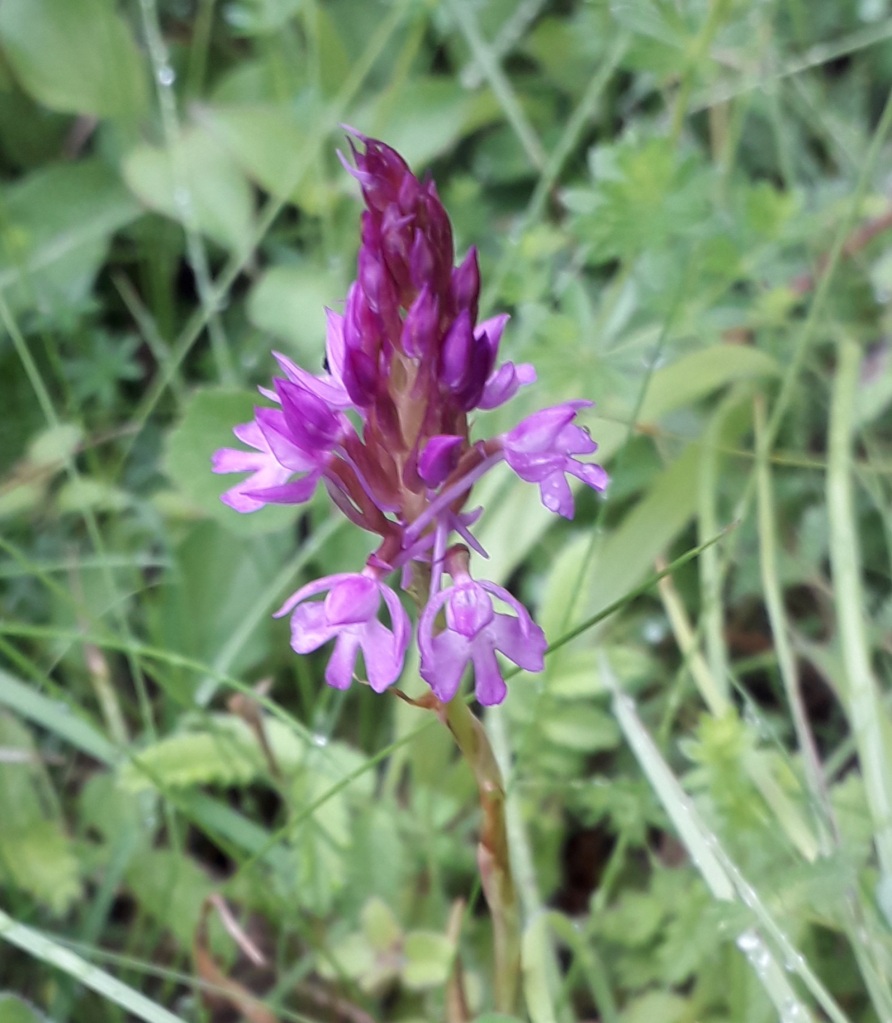



As well as the Military Orchids, we were also delighted to spot Fly, Bee, Pyramidal (just coming out), Greater Butterfly, Twayblade and Common Spotted Orchids. Seven species on one very small site. The rest of the limestone flora was also lush – particularly on a damp, cloudy day.
After a splendid pub lunch on the edge of the Chilterns, we made it over to Hartslock Reserve, overlooking the Thames. The directions to the ‘orchid slope’ are very helpful, particularly as the hillside is so steep. Again – we carefully walked on established paths and soon found the taped off area we were looking for. This site is renowned now for a hybrid ‘swarm’ of Monkey x Lady Orchids. We were a little late to see them at their best, but still fascinating. And after a twitter consultation with orchid guru Mike Waller, I was pleased to have confirmed that the fourth photo below is probably ‘all Monkey’. A much smaller flower spike, and the characteristic monkey-ish arms and legs. But the variation amongst all the flowers will visible was huge, as you can see below.
Monkey x Lady hybrids – with possibly a full Monkey Orchid .
Not sure whether that is eight or nine different orchids on one day. But pretty good going – with my first new one (the Military Orchid) of the year.
Kenfig Nature Reserve, South Wales – 17 June
We stayed in Porthcawl overnight in order to visit the very wonderful dunes at Kenfig nearby. We’d had help with our orchid hunting from Brian Hodgkin again, and also some pretty good directions from the Kenfig Reserve Warden, who was really happy to point us in the approximate direction of the particular species we were hunting – Fen Orchids (Liparis loeslii). These are one of our most critically endangered orchids, and also extremely tiny and difficult to spot in the dune slacks which are their normal habitat.
But we set off on what turned out to be one of the hottest days of the year, to scour the relevant areas. We took extra care to only follow well worn paths and not to tread on anything we shouldn’t. Kenfig is a stunningly beautiful site. Despite the proximity of Port Talbot, on the horizon, the combination of scrub, open pools and dunes, has created a rich and varied habitat. We were surrounded by Whitethroats and Stone Chats as we walked by the main pool. Dark Green Fritillaries and Six-spot Burnet Moths were everywhere. I was delighted to see so many Early Marsh Orchids (Dactylorhiza incarnata -another new one for me), of various colours, as well as Southern Marsh, Pyramidal, and Common Spotted Orchids. There were also clearly many hybrids, which I couldn’t really identify precisely (some best guesses below). We very nearly gave up on the Fen Orchids, and there was considerable ‘debate’ between myself and my other half about whether we were following the right directions. But we suddenly spotted a very white Common Spotted Orchid, which the warden had suggested as a good marker – so we doubled our efforts at that point. We never made it to the centre of the big slack, as I was concerned about trampling across so many stunning Marsh Helleborines, but at long last I spotted one, then two, then another tiny Fen Orchid around the edge of the slack. Success!! A very long, hot morning – but a great pub nearby, to celebrate our success.




Fen Orchids (Liparis loeslii)

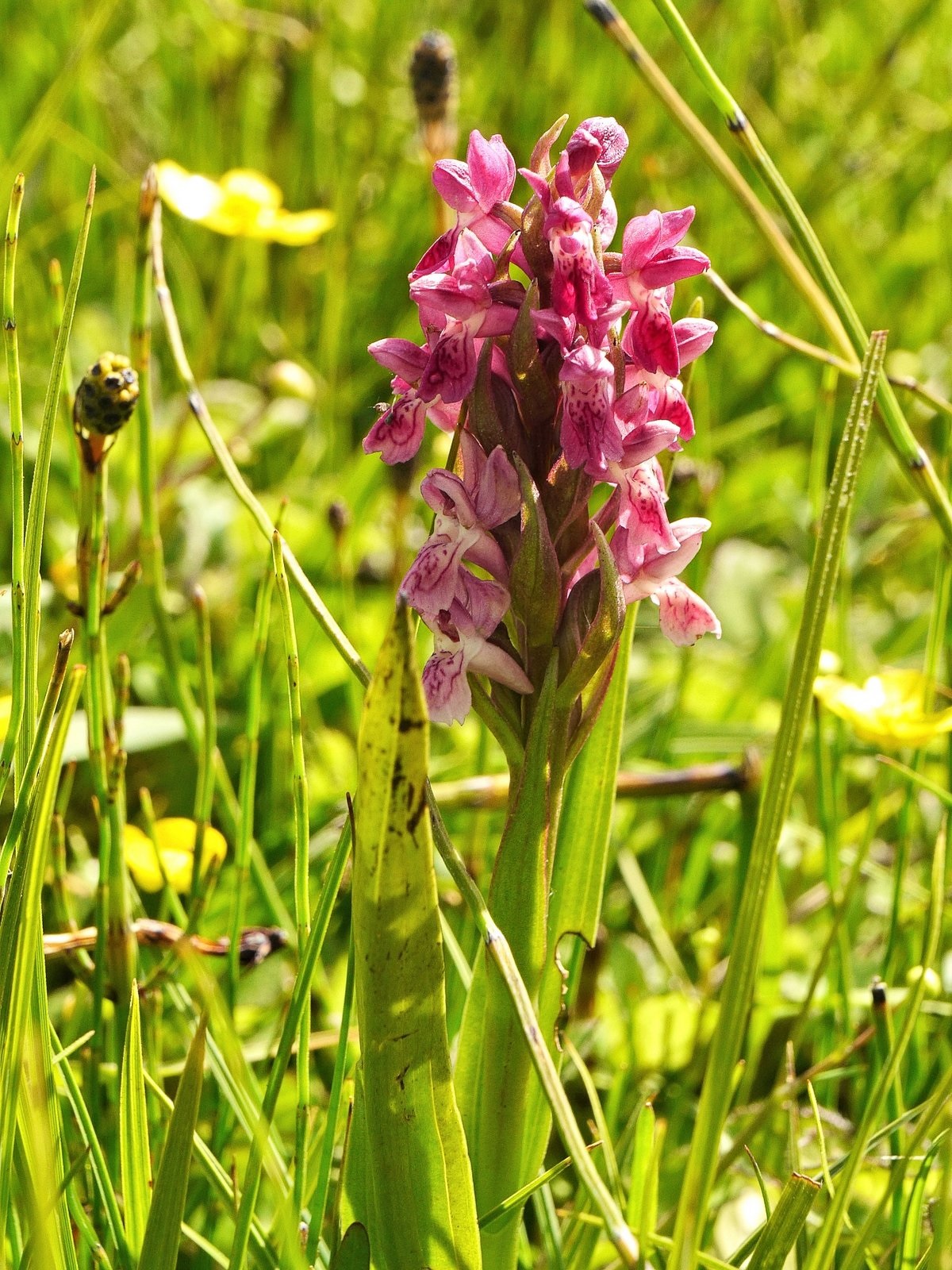

Early Marsh Orchids – this brick red colour suggests the coccinea sub species.




Southern Marsh Orchid, a possible hybrid (Common Spotted & Early Marsh??), March Helleborines, and another Early Marsh Orchid (well past its best, but possibly the subsp. incarnata ).
The site was full of other plants and insects – a real delight. Below there are Six-spot Burnet Moths on Vipers Bugloss, and a Dark Green Fritillary on Knapweed.


Totternhoe Nature Reserve, Bedfordshire – 1 July 2022
We always combine a trip to see my old mum in her Bedfordshire care home, with a visit to my sister. On this occasion we added a diversion to a local nature reserve at Totternhoe. Some earlier research had suggested we might see Musk Orchids (Herminium monorchis) at this site – although I was a bit unsure about the timing (and it’s been very hot and dry). This is a lovely site – a bit of the Chilterns in the south of Bedfordshire, and with fabulous views from the summit of old motte and bailey ramparts. All of that history and the most wonderful chalk grassland – full of butterflies and Red Kites wheeling overhead. Splendid.




I thought I know roughly where to look – on the Totternhoe Knolls (apparently old chalk pits) just below the little summit. But we were very lucky to meet the reserve warden, Richard, working on site. Richard and his Wildlife Trust apprentice, Alfie, were delighted to show us some of the marvellous flora on their site. The Man Orchids had gone over completely, but there were many Common Spotted and Pyramidal Orchids, and Twayblade. The pink flower of Sainfoin was all the over the site, which Richard says is very common in this part of the world (we don’t see it often in Derbyshire). Then amazingly we spotted first one, then two, tiny Musk Orchids. Richard felt it was a poor year for these exquisite little gems – possibly due to the very dry conditions. He was also able to show us one Frog Orchid. All very lovely.

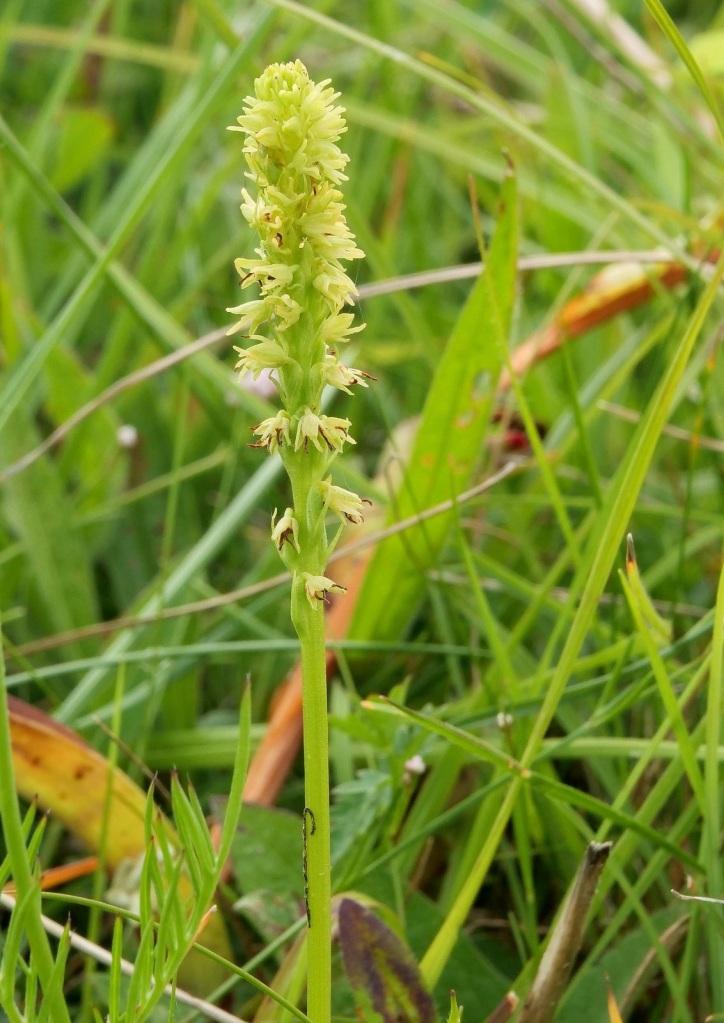


Tiny Musk Orchids amongst Common Spotted Frog Orchid So many Common Spotted Orchids
A wonderful morning followed by a much needed pub lunch (and we may have converted my sister to orchid hunting!).
A Roadside Verge in Derbyshire! 2 July 2022
During one of our local environment group walks, a good friend had mentioned to me this amazing roadside verge full of different orchids – up on the Dark Peak’s Eastern Moors, in a very wet, probably rather acid, ditch along with horsetails and rushes. So we just had to go and see them – and stunning they were. So many orchids – possibly Common Spotted, maybe Heath Spotted as well, certainly Southern Marsh Orchids, and possibly Early Marsh Orchids also. And many hybrids of all these Dactylorhiza species mixed in. I received some suggestions about some of these from my orchid ‘guru’, Richard Bates – but it’s so difficult to accurately identify these amongst so many variations. Basically – we just admired the variety and the whole spectacle. I shall come back earlier next year to see if there are any obvious Early Marsh Orchids here (or not).
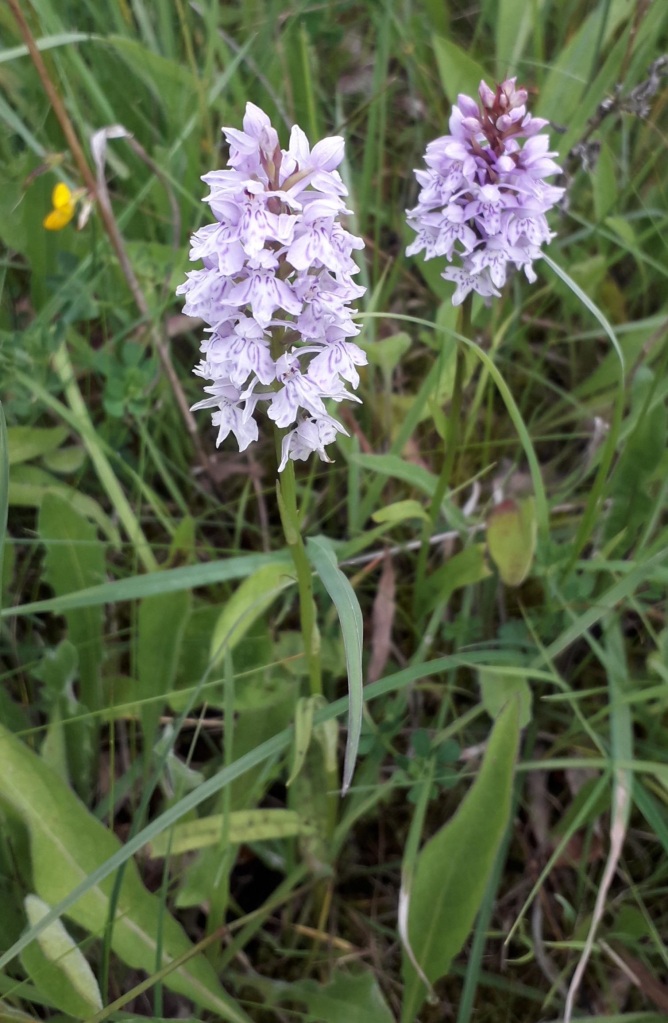
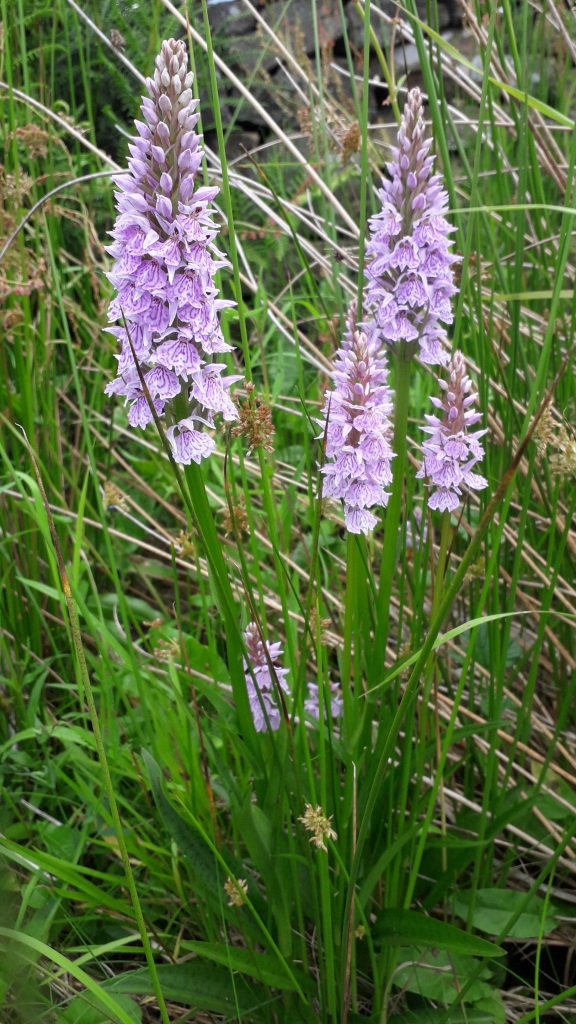



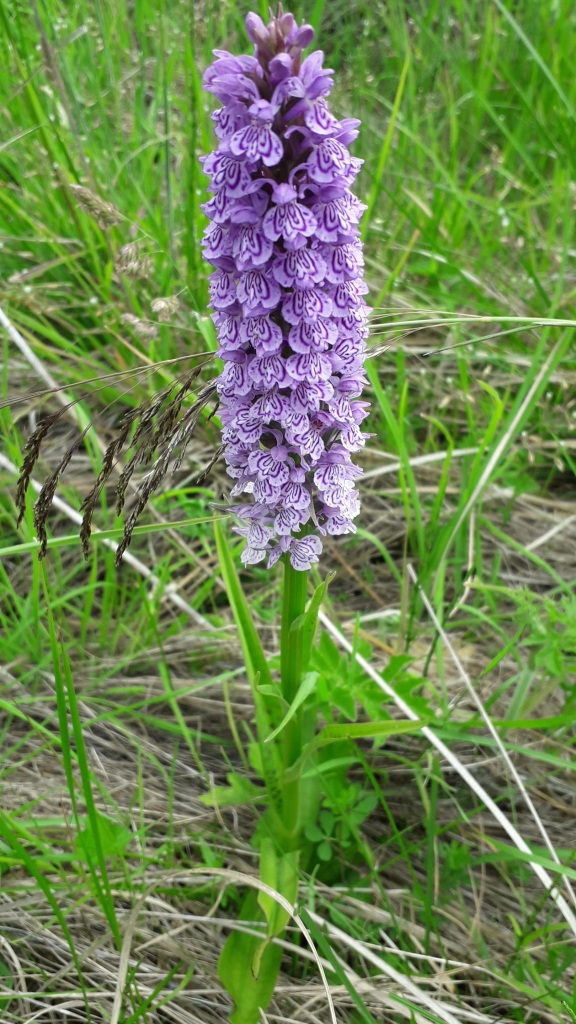

I’m quite unsure about many of the captions above. I also shared these photos on the UK Wild Orchids Facebook page, and that provoked even more discussion. But there were lots of helpful pointers, and some fascinating comments about the genetic make-up (tetraploid or diploid) of different Dactylorhiza species, which just emphasised to me how much I have to learn!
Bishop Middleham Quarry – near Durham – 16 July
We stopped at this fabulous Durham Wildlife Trust Reserve on our way up north to Northumberland. I’d read so much about this site on social media, and it was too good an opportunity to miss. The reserve is just off the A1, a bit tucked away, in an old limestone quarry. This Saturday turned out to be the start of one of the hottest weekends ever recorded in the UK. But the reserve was almost deserted – a strange, quiet, almost magical place basking in the summer sunshine. And oh my goodness – were there orchids! Just stunning.

The view of the old quarry, across a carpet of Marsh Fragrant orchids (and so much more).



There were so many Marsh Fragrant Orchids and Twayblades across the quarry floor. Including a rather lovely pale pink type.





The real highlight were the Dark Red Helleborines – hundreds of them. And so tall – some must have been three feet tall – quite spectacular.





The flora of the whole site was lovely though – here are just a few – Yellow Wort, Restharrow (plus a vetch of some sort), Carline Thistle, Common Centaury, and Greater Knapweed (with a Burnet Moth in attendance).
We could have spent a long time exploring the site – but lunch, and travels further north called.
Northumberland Coast – 16 – 23 July
We had many reasons for visting the Northumberland Coast. Bird watching is always a pleasure – although we were nervous of the worsening Avian Flu disaster threatening this area. In the event, we saw only a few dead birds – but tragically, the tern colonies on Coquet Island and the Farne Islands have been badly hit. We were lucky to experience the last of the Arctic Terns and Little Terns on the Long Nanny, near Beadnell, before they fly elsewhere for the winter. Lots of excellent castles to explore, and long walks along deserted beaches. But my main orchid target was on Lindisfarne. Only found on The Snook – a series of dunes and dune slacks – the Lindisfarne Helleborine was considered a separate species until quite recently. Now there is some debate – some say it’s a sub species of the more familiar Dune Helleborine, and some say it’s just an ‘ecotype’ . Well, it’s in the list I’m working from – so I’ll count it for the time being!
The weekend had been so hot, and the previous weeks extremely dry as well. We thought we might be too late. With some much needed assistance from others, we did manage to find a very small group of the Lindisfarne Helleborine. But most had gone to seed already – just two tiny, rather weedy, specimens were still in flower.


Lindisfarne Helleborine (Epipactis sancta)



Also lovely to see so many Marsh Helleborines and Northern Marsh Orchids.

Walking along the coastal path led to so many different species though – not just orchids – Scarlet Pimpernel with Ragwort, Sea Rocket, Perennial Sowthistle (I think), Vipers Bugloss and Mayweed. The cliffs and dunes were awash with colour.
Rather wonderfully – that’s taken our current total of orchid species (including E. sancta – sorry!) to 36. I think things may get a lot trickier from hereon in. I’ll have to start planning immediately! Roll on 2023!! Orchid hunting in 2023



